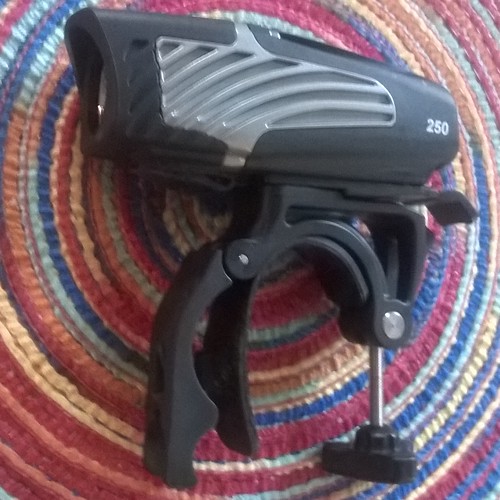A Pearl-Izumi "Barrier" cap
By this standard, my wife gave me the perfect Christmas gift since I didn't know I wanted this cycling cap until I received it. In rainy weather I have either worn just a baseball cap under my helmet or when it is cooler, a hat that covers my ears pulled over the baseball cap and then tried to cram on a helmet over both of them. The results aren't particularly comfortable although the main goal, keeping rain from running down my face, is well accomplished.
This cap with its smaller bill should do fine for keeping water off my fact but also will fit under my helmet much better, even if I decide to wear it under another hat. I like it.
Pearl Izumi's barrier cycling cap combines the functionality of a cycling cap with the cold-weather protection of P.R.O. thermal fabric. It keeps your head warm and the sun out of your eyes, all while stylishly fitting under your helmet. Plus, this stellar headpiece boasts a ponytail cut-out and reflective accents.I am afraid I have not had a ponytail for ten years or so. Also, I find it amusing when the company logo is done in some reflective material and this is termed a "reflective accent" as if it improves the rider's visibility. Hmmm.
Chrome Industries mystery cycling (t-)shirt
My brother-in-law Robert's family gave me a pretty good present too - a close second. In the three or four years I have acquired several Merino wool cycling jerseys plus a Merino wool long-sleeve "base layer" (not specifically intended for cycling).
What they gave me was a Merino v-neck t-shirt that the company Chrome Industries calls a cycling jersey - but one that doesn't look like a cycling jersey. Which is certainly true; it looks like a well made t-shirt and has no pockets at all (unlike most cycling jerseys). The shirt has 10 percent nylon and 90 percent wool, which I don't think is noticeable - it is somewhat heavier than the "base layer" garment. Very comfortable - it just feels good.
It appears that Chrome Industries discontinued trying to sell these shirts because they aren't on their site. Perhaps it was because of the cost, which according to what seems to be a web developer site (accidentally indexed by Google) the price was $70. I am thinking my relatives purchased a closeout version. Which would make sense!!
Long sleeve cycling shirt (with Australian URL)
My brother-in-law Paul did a good job, too - he was the person who first bought me a Merino cycling jersey several years ago adn this year he gave me this long sleeve jersey (not wool . . . ) with the amusing "evolution" graphic on the back. Apparently 1791 is considered (by some) to be the year that bicycles were invented. This will be great to wear on rides in the spring. Again, this is not something I would think to buy but I am glad to have it.

NiteRider 250 lumen light
On the other hand, I have a different example. I had ordered a jacket for one of my sons and since I was going to get free shipping and had some "points" that would reduce the cost, I (finally) ordered a new front bike light. I have been using the same 100 lumen NiteRider unit for three or four years - it has a separate battery with a short cable that is supposed to be attached to the stem, behind the handlebars. It isn't a great arrangement. I did have a problem with it and got good service from NiteRider so I bought another NiteRider light, a Lumina Micro 250, that is a little brighter. It is very nice.
Big things come in small packages and the Lumina Micro 250 is the proof. Smaller and more compact than the original Lumina series, the Lumina Micro 250 delivers a powerful punch with 250 lumens of light output.I then handed this off to one of my sons and said he could give it to me for Christmas - apparently at that moment I was buying into the logic that only I know what I need (or want~).
I think it more to do with categories - with cycling clothes, it is simpler for others to think of something that I will enjoy and use than it is for a basic bit of hardware like a light.